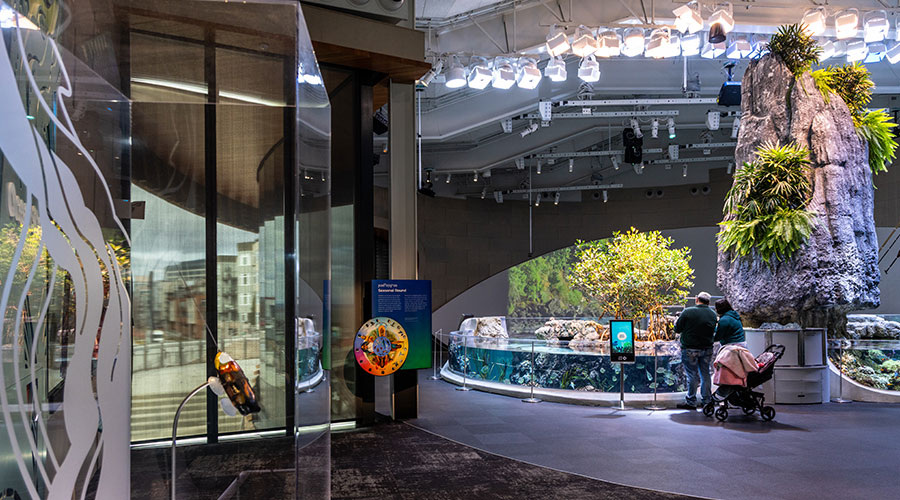 Lighting control applications need to take into account the needs of the space in question, such as an open office.
Lighting control applications need to take into account the needs of the space in question, such as an open office.Understanding Applications for Lighting Controls Upgrades
Focusing on control strategies, space needs and planning principles can help managers create successful installations
Besides knowing where to install lighting controls, managers also need to be aware of four application principles: the size of the load connected to the device or system, the location of the input sensor, the location of the lighting controller for the output, and the system’s programmability and communications capabilities.
When discussing sizing the load per controller, the issue is control zoning, which is defined as one or more lights controlled in unison by one controller or controller output. If the user flips a switch and a group of lights turns on or off, that group is the switch’s control zone. This strategy has major implications for energy savings and complexity. Smaller control zones generally make the control system more responsive and, therefore, generate more energy savings while being less prone to occupant complaints. Luminaire-level lighting controls render control zones at the luminaire, maximizing responsiveness.
As for sensor location, installing it in the luminaire simplifies placement and installation. If it is remotely installed, it must be placed in an optimal location. If the sensor is wireless, it can be moved to tune results. Otherwise, the sensor must be installed, located and oriented so it detects what it is supposed to detect and does not detect what it is not supposed to.
The sensor also should be optimal for what it is seeing. For example, in a space with partitions that can block a direct line of sight between the sensor and task, ultrasonic rather than passive-infrared occupancy sensors would be better-suited to ensure detection.
Managers also need to determine the location of the lighting controller. This is the element of the control system where its intelligence resides, as well as where the system interprets input signals and decides what the output on the lighting load should be. Intelligence can be installed at the luminaire, room, or building level, with a building-level system operating at one or multiple levels of decision-making.
This decision ties into the way the system is connected and whether it will be wired or wireless, with wireless generally being better suited to existing buildings to avoid installation of low-voltage control wiring. If the entire control system connects at the building level to a central server or the cloud, the system operator can talk to the control system and listen to it. In other words, using a graphical software interface, the operator can program the system, fine-tune or otherwise create and change sensor settings and schedules, pull data for analysis, and monitor the lighting system for maintenance.
The process of lighting control system design, specification, installation, and commissioning can be complex, but the basic scoping need not be. To do so successfully, managers need to understand what lighting controls can do in terms of capabilities and benefits and identify suitable applications where they will deliver value. From there, they can appropriately match a suitable controls solution.
Craig DiLouie, LC, CLCP, is education director for the Lighting Controls Association — www.LightingControlsAssociation.org — a council of the National Electrical Manufacturers Association dedicated to educating the public about lighting controls. Learn more at www.LightingControlsAssociation.org, which offers free courses and other education on lighting-controls technology and application.
Related Topics:














